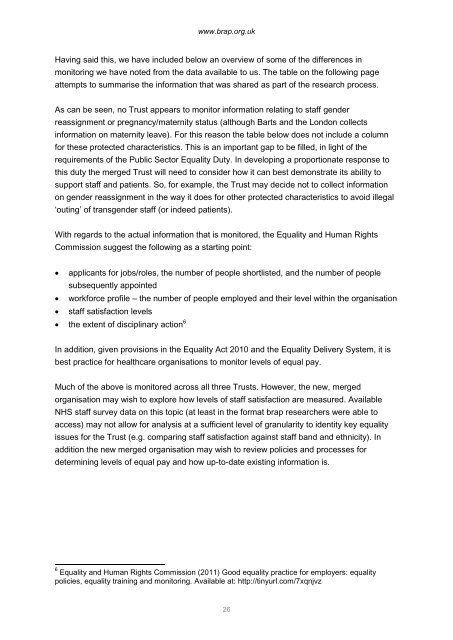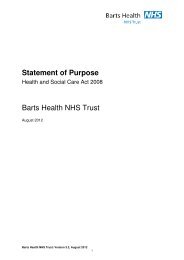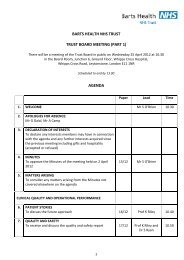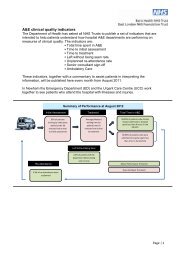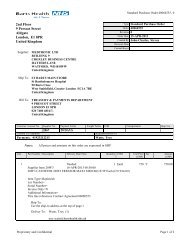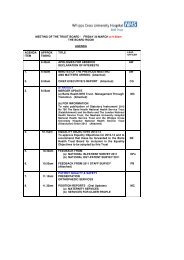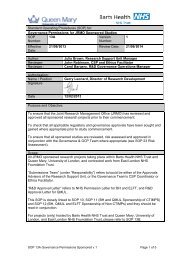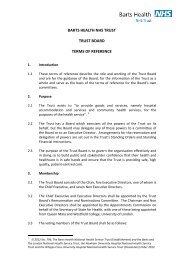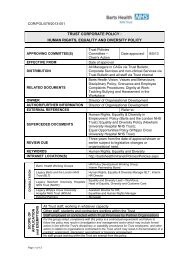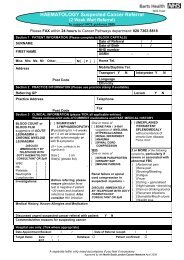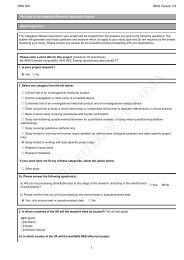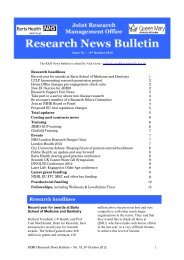Barts Health Equality and Human Rights Impact Assessment Report
Barts Health Equality and Human Rights Impact Assessment Report
Barts Health Equality and Human Rights Impact Assessment Report
- No tags were found...
Create successful ePaper yourself
Turn your PDF publications into a flip-book with our unique Google optimized e-Paper software.
www.brap.org.ukHaving said this, we have included below an overview of some of the differences inmonitoring we have noted from the data available to us. The table on the following pageattempts to summarise the information that was shared as part of the research process.As can be seen, no Trust appears to monitor information relating to staff genderreassignment or pregnancy/maternity status (although <strong>Barts</strong> <strong>and</strong> the London collectsinformation on maternity leave). For this reason the table below does not include a columnfor these protected characteristics. This is an important gap to be filled, in light of therequirements of the Public Sector <strong>Equality</strong> Duty. In developing a proportionate response tothis duty the merged Trust will need to consider how it can best demonstrate its ability tosupport staff <strong>and</strong> patients. So, for example, the Trust may decide not to collect informationon gender reassignment in the way it does for other protected characteristics to avoid illegal‘outing’ of transgender staff (or indeed patients).With regards to the actual information that is monitored, the <strong>Equality</strong> <strong>and</strong> <strong>Human</strong> <strong>Rights</strong>Commission suggest the following as a starting point: applicants for jobs/roles, the number of people shortlisted, <strong>and</strong> the number of peoplesubsequently appointed workforce profile – the number of people employed <strong>and</strong> their level within the organisation staff satisfaction levels the extent of disciplinary action 6In addition, given provisions in the <strong>Equality</strong> Act 2010 <strong>and</strong> the <strong>Equality</strong> Delivery System, it isbest practice for healthcare organisations to monitor levels of equal pay.Much of the above is monitored across all three Trusts. However, the new, mergedorganisation may wish to explore how levels of staff satisfaction are measured. AvailableNHS staff survey data on this topic (at least in the format brap researchers were able toaccess) may not allow for analysis at a sufficient level of granularity to identity key equalityissues for the Trust (e.g. comparing staff satisfaction against staff b<strong>and</strong> <strong>and</strong> ethnicity). Inaddition the new merged organisation may wish to review policies <strong>and</strong> processes fordetermining levels of equal pay <strong>and</strong> how up-to-date existing information is.6 <strong>Equality</strong> <strong>and</strong> <strong>Human</strong> <strong>Rights</strong> Commission (2011) Good equality practice for employers: equalitypolicies, equality training <strong>and</strong> monitoring. Available at: http://tinyurl.com/7xqnjvz26


